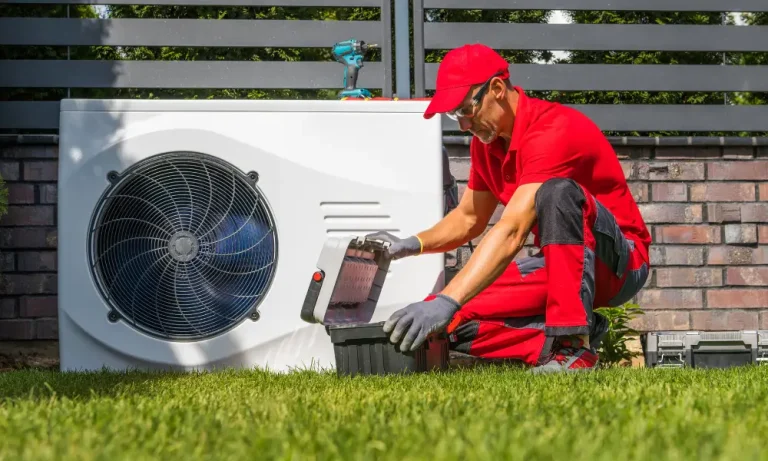If you’ve ever noticed the words “AUX HEAT” appear on your thermostat and wondered, “Wait, what’s that?”, you’re not alone. Many homeowners see this and assume something’s wrong with their HVAC system.
But in reality, auxiliary heat or “aux heat” for short, is a normal and important function of your heat pump, especially during colder weather.
Let’s break down what it does, when it should turn on, and when you might need to call a technician.
What Is Auxiliary Heat?
Auxiliary heat is a backup heating feature in heat pump systems. Typically, a heat pump operates by extracting heat from the outside air and transferring it indoors to warm your home. However, when outdoor temperatures drop too low, typically below 40°F, the heat pump has a harder time finding enough warmth in the air.
That’s when auxiliary heat steps in. Your system automatically activates built-in electric heating strips (or, in some systems, a gas furnace) to provide the extra heat needed to maintain a comfortable indoor temperature. It’s a bit like giving your HVAC system a helping hand when winter gets extra chilly.
When Does Auxiliary Heat Turn On?
There are a few common situations when your system switches to auxiliary heat:
-
Extremely Cold Weather
When it’s freezing outside, your heat pump may not be able to keep up with your thermostat setting on its own. The aux heat kicks in automatically to help it out.
-
Sudden Temperature Changes
If you bump your thermostat up several degrees at once, your system might use auxiliary heat to warm your home faster.
-
Defrost Mode
Sometimes, your outdoor unit can gather frost or ice. During its defrost cycle, your heat pump briefly switches to cooling mode to melt that ice, which can make the air inside feel cool. To keep you comfortable, auxiliary heat turns on to balance the temperature indoors.
When Should You Be Concerned?
Seeing “AUX HEAT” on your thermostat occasionally is completely normal. But if it stays on for long periods or turns on when it’s not that cold outside, that could signal a problem.
Here are a few possible issues:
- Dirty Air Filter – Restricted airflow forces your system to work harder and rely more on auxiliary heat.
- Low Refrigerant Levels – Your heat pump may struggle to extract heat efficiently.
- Thermostat Issues – Sometimes, incorrect settings can cause auxiliary heat to run unnecessarily.
Keep Warm Without Wasting Energy
Auxiliary heat is your system’s way of saying, “Don’t worry, I’ve got this!” during cold weather. While it’s perfectly normal to see it come on occasionally, overuse can drive up energy costs and strain your system.
For expert HVAC maintenance and heat pump service, trust Service Champions to keep your home comfortable and efficient no matter how cold it gets outside.


Comments are closed.